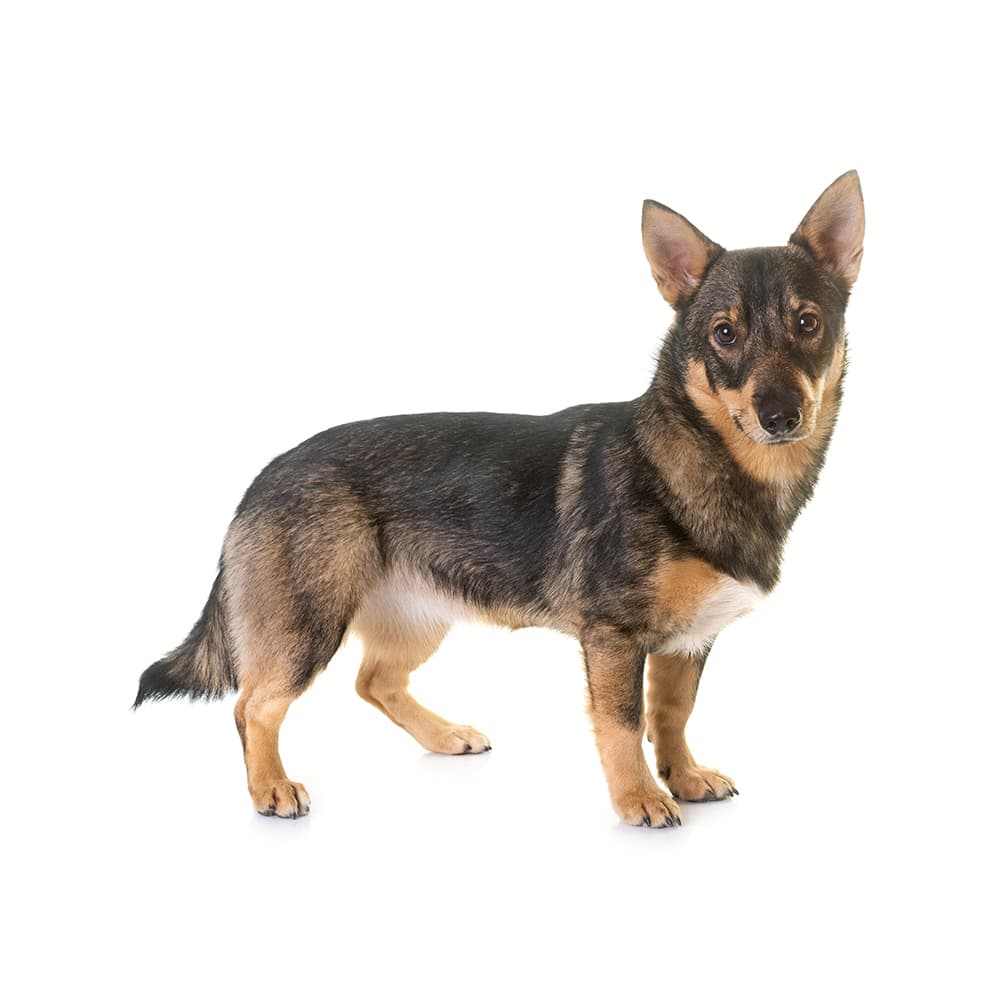Discover your dog's connection to this breed and 200+ others


Discover your dog's connection to this breed and 200+ others



The Swedish Vallhund, also known as Västgötaspets, which translates to "West Gothia Spitz," is an ancient dog breed that dates back to at least the 8th or 9th century in Sweden. The Vallhund is believed to have been a farm dog, skilled at herding cattle and other livestock, and was highly valued for its versatility and hardiness. ome believe the breed is a cross between a Scandinavian spitz dog and a Welsh corgi, but other historians believe the Vallhund is the older breed. The breed nearly went extinct in the early 1940s but was revived by two Swedish breed enthusiasts, K. G. Zettersten and Bjorn von Rosen. They launched a campaign to locate remaining specimens of the breed and began a concerted breeding program.
Swedish Vallhunds can suffer from hip dysplasia, patellar luxation, hyperuricosuria, and a type of progressive retinal atrophy called Swedish Vallhund retinopathy. Genetic testing can assist veterinarians with diagnosis and proactive care, as well as help breeders identify affected and carrier dogs.
Swedish Vallhunds are known for being friendly, intelligent, and energetic. They are highly trainable and excel in activities that challenge them mentally and physically, such as obedience, herding, and agility trials. They are also known for their loyalty and protective nature, making them excellent family pets. However, their herding background can make them prone to nipping at heels and trying to "herd" children or other animals, so they may need to be trained out of this behavior. Vallhunds are also known for being quite vocal and may bark or "talk" to their families.
A canine genetic lineage is a group of individuals or entire breeds that descended from common ancestors predating modern breed formation. Often these lineages are associated with a ‘type’ of dog with a unique historical working role and associated behaviors (e.g., herding, scent hunting, etc.).
Spitz and Sled Dogs originate in the Arctic and subarctic regions which caused them the develop adaptations to cold climates. Some of these adaptations give rise to characteristics of the lineage, most notably a dense double coat that helps with insulation. The lineage of these dogs can be followed back to ancient breeds developed by Indigenous people. These ancient breeds were used as an aid for transportation, herding, guarding, and hunting. These jobs have created dogs that are independent, intelligent and have strong work ethics as well as a sturdy body that helps them to pull sleds or go on long journeys over rough terrain.
Example breeds with ancestry from this lineage include Akita, Chow Chow, and Siberian Husky.
The Swedish Vallhund is often confused with the Corgi due to their similar appearance, but they are distinct breeds. The exact relationship between the two breeds is not known, but they likely share common ancestry.
The name "Vallhund" translates to "herding dog" in Swedish.
Despite their small size, Vallhunds are incredibly strong and athletic, capable of herding cattle and other large animals.
The breed is known for its unique "harness markings," darker fur that appears over the shoulders and resembles a harness.
This breed can be born naturally with no tail, stub tail or full curl tail.
https://www.akc.org/dog-breeds/swedish-vallhund/
https://www.ukcdogs.com/swedish-vallhund
https://www.petmd.com/dog/breeds/c_dg_swedish_valhund
https://www.pawprintgenetics.com/products/breeds/309/
https://www.fci.be/en/nomenclature/SWEDISH-VALLHUND-14.html
Recommended by top vets with decades of experience
21 breeds
64 genetic health markers
50 genetic trait markers
